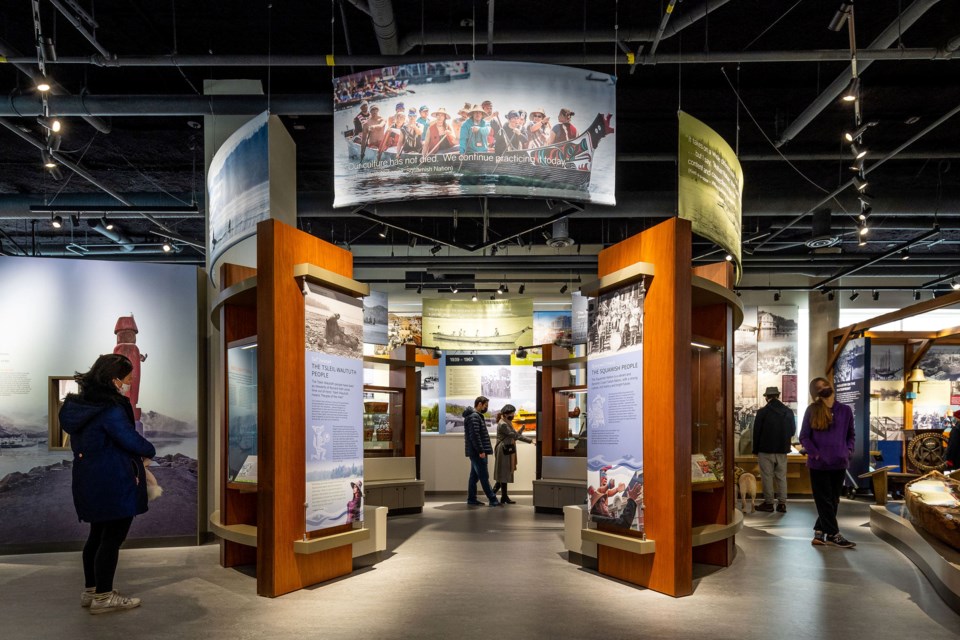The Museum of North Vancouver is being applauded for its contribution to Indigenous education by the Canadian Museum Association, with an Outstanding Achievement Award dedicated to its inclusive main exhibit gallery.
Rather than a specific section dedicated to First Nations history and culture, stories from the local Squamish and Tsleil-Waututh Nations are woven throughout the gallery. Instead of a colonial interpretation of historical timelines, the gallery presents all local communities and their connection to the land and how they have interacted with it over time.
Indigenous voices are also present in the museum’s Coast Salish Welcome Circle, the exhibit gallery's central feature.
“We’re all so thrilled and honoured to be recognized for the work that we’ve been doing collaboratively with the Squamish and Tsleil-Waututh Nations, and really with the whole community,” said MONOVA’s acting director, Laurel Lawry.
Lawry said the developing and designing of the exhibit gallery is a long term project that has had multiple people contribute along the way, with input from Elders and cultural advisors, most notably Tsleil-Waututh Nation Elder Carleen Thomas and Squamish Nation Chief Janice George.
“It has been a relationship that’s been developing over years, if not decades, and, for us, it’s really about having respect and genuine curiosity for the experiences and the stories of those who have stewarded this land since time immemorial,” she said.
“This is a very important time for this kind of education, it’s kind of a watershed moment for museums right now.”
In 2015 the Truth and Reconciliation Commission specifically called on museums to help develop a public understanding of why and how the country’s past is relevant, with the Canadian Museums Association (CMA) requested to deliver a report and recommendations as part of a national review of museum policies.
Lawry said that the National Museum Association recognizing the work of such a “small community museum” in North Vancouver “really speaks not only to the vision of the people who contributed to the gallery itself, but really the dynamic and exciting history that is found in this region.”
“The whole of the North Shore is a place of invention, it’s a place of progress. It’s a place of people being excited to make the world a better place and not be afraid of change. And so to me, this is sort of a win for the whole community,” she said.
Mina Kerr-Lazenby is the North Shore News’ Indigenous and civic affairs reporter. This reporting beat is made possible by the Local Journalism Initiative.



